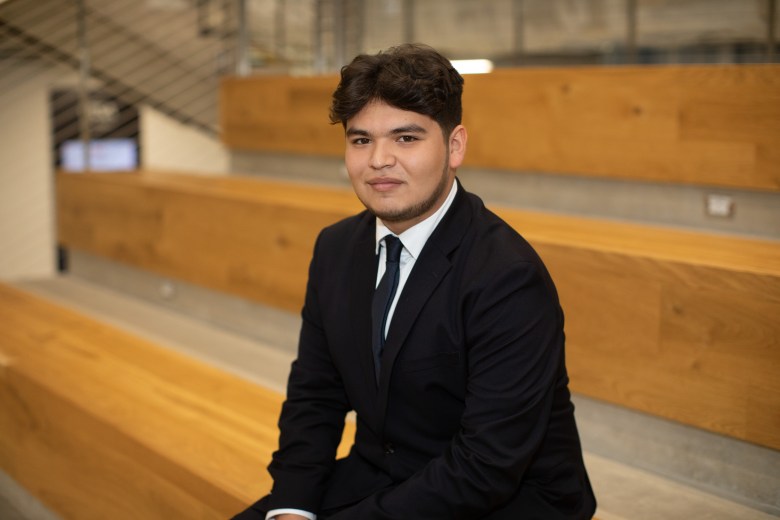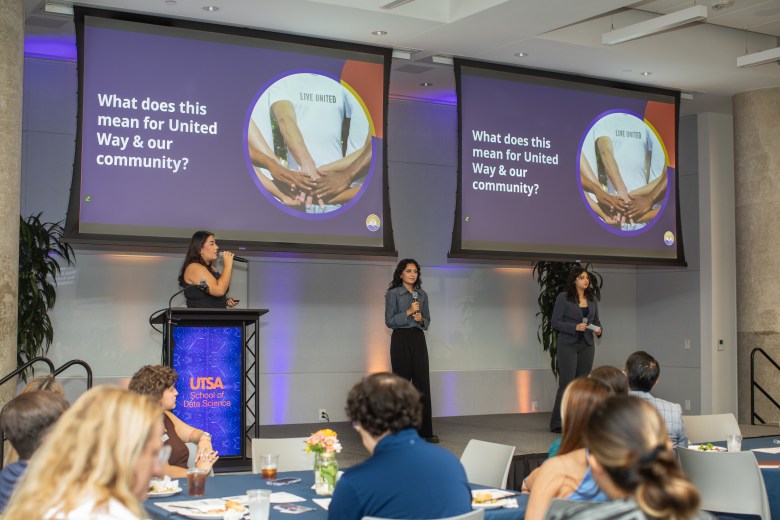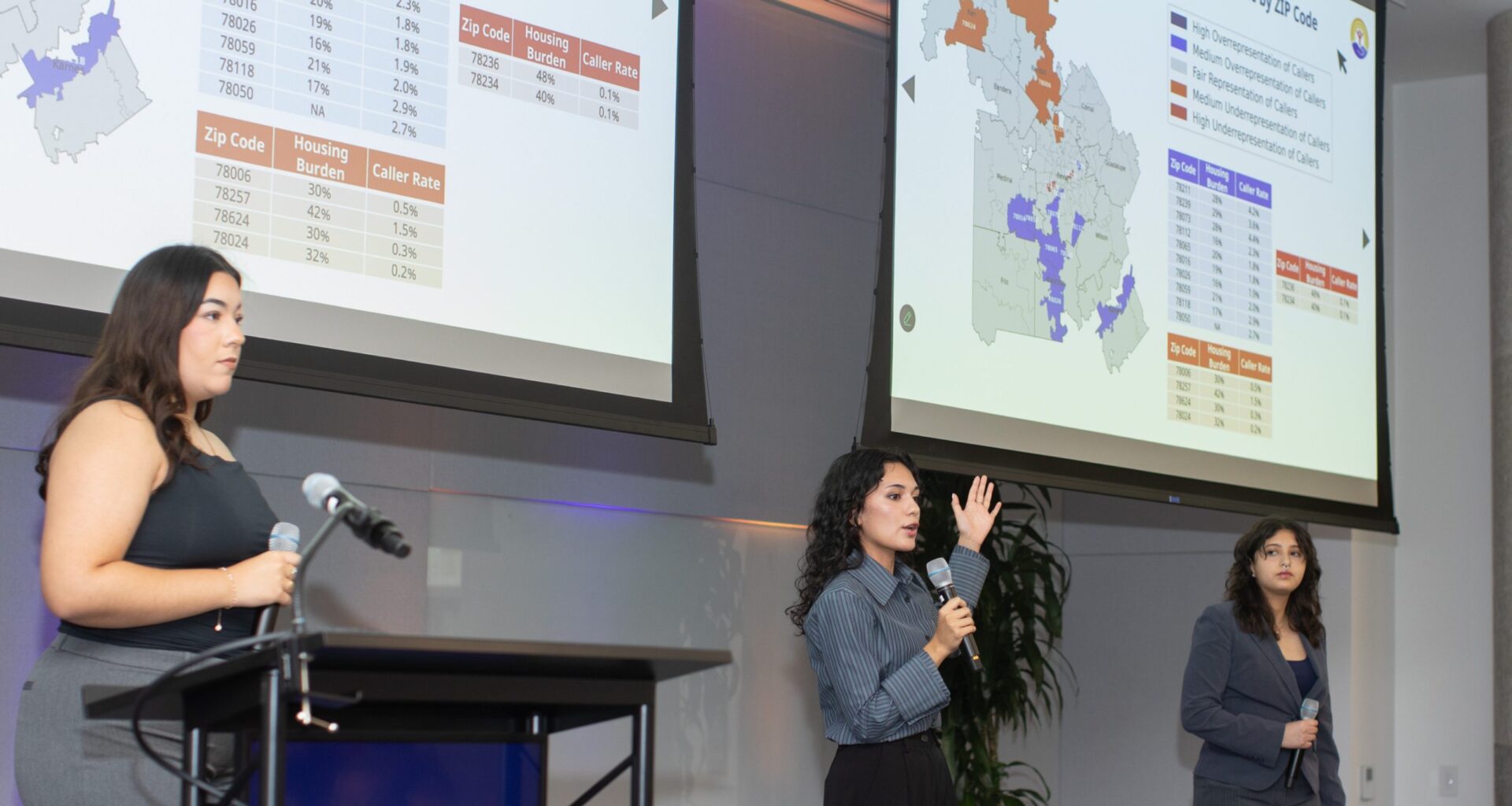When University of Texas at San Antonio students Daniella Bowerman and Emir Calvillo envisioned their careers in computer science, they saw themselves joining the corporate world.
But this week, the two students worked with nonprofits all summer figuring out ways to address the city’s various needs.
Bowerman and Calvillo were among a cohort of 17 students selected to participate in the Data Science and AI Community Innovation Scholars summer program through UTSA’s School of Data Science.
This is only the second summer for this program, which seeks to engage students from all disciplines to teach them how they can help identify and address community issues using data science and AI methods.
“Because of my concentration, I have always tried to apply to things that are more centered around cybersecurity,” said Bowerman, 20, a computer science major with a concentration in cyber operations. “This definitely prepared me and opened my eyes to the data world and especially in nonprofits.”
 Emir Calvillo, computer science senior with a concentration in data science, prepares for his presentation. Credit: Vincent Reyna for the San Antonio Report
Emir Calvillo, computer science senior with a concentration in data science, prepares for his presentation. Credit: Vincent Reyna for the San Antonio Report
The program — created last year through a sponsorship by H-E-B and in partnership with United Way of San Antonio and Bexar County — concluded on Wednesday with a formal presentation of the students’ findings to their project partners, families and classmates.
The cohort spent their first two weeks of the 10-week program diving deep into data science and learning how to implement their skills in a real-world setting. Then they were assigned a group that would team up with a local nonprofit organization to address a specific need, like housing or food insecurity.
From United Way to the Ronald McDonald House, to Haven for Hope and the San Antonio Community Resource Directory, known as SACRD, the students learned how to use data collected by the organizations to identify and predict community needs, fundraising opportunities for the nonprofits, and how to extend the reach of the resources the organizations offer.
“The students get to see firsthand the result of the projects that we’re working on,” said Amanda Brown, associate director of strategic initiatives for the UTSA School of Data Science. “It concludes with recommendations for those nonprofits to implement down the line. And so it’s not only experiential learning and something positive that they can add to their resume, but they’re also really contributing and giving back to the community.”
Calvillo, 21, is a senior majoring in computer science with a concentration in cyber operations. His team was tasked with finding out which San Antonio zip codes have high demand for food resources but limited access to SACRD’s services.
They sought to answer two questions: Where is community demand for food-related services highest? And, which areas face the largest service gaps?
 Computer science junior Daniella Bowerman gives her presentation with computer science senior Luciana Alvarado and business analytics senior Serina Zavala. Credit: Vincent Reyna for the San Antonio Report
Computer science junior Daniella Bowerman gives her presentation with computer science senior Luciana Alvarado and business analytics senior Serina Zavala. Credit: Vincent Reyna for the San Antonio Report
“The way SACRD works, it’s an online directory of services and resources that people can access,” Calvillo said. “So, every time somebody interacts with the website, every time somebody clicks or shares a program, that’s data that we have available for this project.”
Calvillo’s team collected, cleaned and aggregated the organization’s users’ search data on their site to analyze it. They tested this data and created models to detect and predict trends. They then presented their findings to the organization using maps, graphics and dashboards.
“We use the number of programs available to create a metric that we call the gap square,” he said. “So we assign each ZIP code a gap square based on the findings. And ZIP codes like 78215, 78270 and 78203 had a significantly higher gap score than all of them.”
Those zip codes, on the north and east sides of downtown and even farther northeast toward Thousand Oaks, were among the places that saw the biggest gaps.
These “gap square” models are now applicable to other data sets, Calvillo said, helping the nonprofit figure out trends in other services and perhaps get ahead of need. Their team lead said there was a possibility that their results will soon be presented to city leaders, he said.
Both Calvillo and Cowerman said it’s not uncommon for data science students to apply to every single internship opportunity they can get their hands on, considering how competitive the market is for graduates with experience.
But what they weren’t expecting was for one of those many applications to lead them to a better understanding of how they can apply their knowledge to help solve problems, rather than create profit.
“I feel like it definitely really opened up my eyes to the issues behind all the beauty of San Antonio,” Bowerman said, adding she is now more curious than ever about what she and her classmates will be able to accomplish post-graduation.
“What can we do for the community with all these insights with data? What can we do for the community with all these insights and new advancements we have with artificial intelligence?” she said. “How can we make sure that we’re using all of this correctly and safely?”
